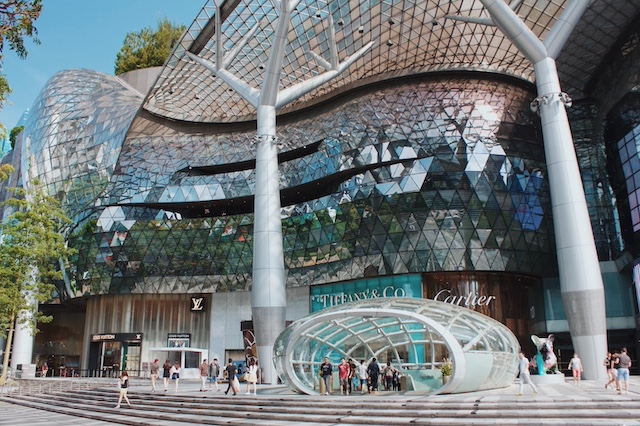The landscape of urban living and security is undergoing a revolutionary transformation, propelled by the seamless integration of technology into the very fabric of our cities.
This shift is not only redefining the way we experience urban spaces but is also playing a pivotal role in ensuring the safety and security of citizens.
In this exploration, we take a look at the future of evolving cities and the integration of technology into them – unravelling the innovative solutions that are reshaping the urban security paradigm.
The Rise of Smart Cities
Defining the Smart City
The concept of a smart city encompasses the strategic use of technology to enhance urban living.
From efficient resource management to the provision of citizen-centric services, smart cities leverage digital solutions to create environments that are not only sustainable and resilient but also safe.
The Nexus of Technology and Security
At the core of a smart city’s architecture lies a robust security infrastructure that utilises cutting-edge technology.
This infrastructure extends beyond traditional surveillance systems, embracing a holistic approach that integrates data analytics, artificial intelligence, and the Internet of Things (IoT) to create a comprehensive security ecosystem.
Technological Pillars of Urban Security

Intelligent Surveillance Systems
One of the most visible manifestations of technology in urban security is the deployment of intelligent surveillance systems.
Advanced cameras equipped with facial recognition capabilities and real-time analytics empower law enforcement to identify potential threats swiftly.
Cities such as London and Singapore and countries like China have pioneered the use of these systems, demonstrating the efficacy of AI-driven surveillance in enhancing public safety.
Predictive Policing with Data Analytics
Data analytics plays a crucial role in predictive policing, allowing law enforcement agencies to anticipate and prevent criminal activities.
By analysing historical crime data and patterns, machine learning algorithms can identify potential hotspots, enabling proactive measures to be taken. This shift from reactive to proactive policing is a hallmark of smart cities focused on creating safer environments; however may come across as unethical, depending on how it identifies these hotspots.
IoT and Sensor Networks
The proliferation of IoT devices and sensor networks is transforming urban spaces into interconnected ecosystems.
Smart street lights, environmental sensors, and connected infrastructure contribute to a city’s ability to collect real-time data. This data is invaluable for not only responding to security incidents promptly but also for optimising resource allocation and urban planning.
Biometric Access Control
Biometric technology, including fingerprint recognition, retina scanning, and voice authentication, is becoming integral to access control in urban environments.
From securing government facilities to enhancing the privacy and security of citizens, biometric access control ensures that only authorised individuals have access to sensitive areas, contributing to overall urban safety.
Real-world Applications: Showcasing Urban Security in Action

Singapore: A Pioneer in Smart Urban Security
Singapore stands out as a model for smart urban security. The city-state has embraced technology to create a safe and efficient urban environment and has since become known as the world’s smartest city.
Its extensive use of surveillance cameras, coupled with advanced analytics, has enabled law enforcement to respond swiftly to incidents. Additionally, Singapore’s focus on cybersecurity ensures the integrity of its smart city infrastructure, safeguarding against potential cyber threats.
Barcelona: IoT-Driven Urban Innovation
Barcelona’s commitment to becoming a smart city is evident in its innovative use of IoT. The city has implemented sensor networks to monitor everything from waste management to parking spaces.
This data-driven approach not only enhances operational efficiency but also contributes to a safer urban experience by providing real-time information for decision-making in emergency situations.
China: Mass surveillance – preventative or unethical?
China has emerged as a global leader in the deployment of intelligent surveillance systems, prominently featuring facial recognition technology in reshaping urban security.
In cities like Beijing and Shanghai, an intricate network of surveillance cameras powered by advanced artificial intelligence has become an integral part of public life. Facial recognition is widespread, employed in diverse settings such as airports, train stations, shopping malls. As well as residential areas, contributing to an extensive surveillance network aimed at enhancing security and streamlining public services.
However, the omnipresence of this technology has raised ethical concerns, particularly regarding individual privacy and freedom. The massive data collection, combined with the potential for misuse, has sparked debates about the delicate balance between security imperatives. As well as the protection of personal rights. As China’s use of facial recognition garners global attention, it prompts an international conversation about the need for ethical guidelines, transparency, and accountability in the development and deployment of intelligent surveillance systems.
The Chinese experience underscores the importance of finding an equilibrium between leveraging technology for enhanced security and safeguarding individual privacy as smart cities continue to evolve worldwide.
Challenges and Ethical Considerations
While the integration of technology into urban security brings about transformative benefits, it is not without its challenges.
Privacy concerns, data security, and the ethical use of surveillance technologies are paramount considerations. Striking a balance between technological innovation and safeguarding individual rights requires careful regulation and community engagement.
The Future of Urban Security: Toward Inclusive and Sustainable Cities
Inclusive Security Measures
As cities evolve into smart, secure ecosystems, it is essential to ensure that these advancements benefit all citizens equitably.
Inclusive security measures encompass community engagement and accessibility considerations for people with disabilities. As well as the prevention of technological biases to build urban environments that prioritise the safety of every resident.
Sustainable Urban Planning
Sustainability and security are intertwined in the vision of future cities. By harnessing technology for efficient resource management, waste reduction, and environmental monitoring. Smart cities contribute not only to the well-being of citizens but also to the longevity and resilience of urban ecosystems.
Navigating the Smart and Secure Urban Landscape in the Future
The evolution of technology and its implementation into cities and urban planning paints a compelling picture of the transformative power of technology in shaping the future of urban living.
From intelligent surveillance systems to predictive policing and the vast potential of IoT. Cities are harnessing innovation to create safer, more efficient, and sustainable environments. As we navigate this smart and secure urban landscape. The key lies in fostering a harmonious integration of technology that not only enhances security but also upholds the values of inclusivity, privacy, and sustainability.
In the journey toward smart cities, the safety and well-being of citizens remain at the heart of the technological evolution reshaping our urban future.


